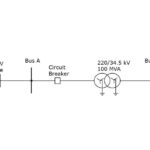
Power distribution networks are increasingly exposed to decentralized and variable sources of weather-dependent renewable energy (RE) generation. This is because the countries including India are gradually tapering down fossil-fuel based generation in favour of Variable Renewable Energy (VRE) generation to advance their clean energy and net-zero goals.
It is therefore becoming more and more challenging to manage the modern electricity grid and maintain an optimum mix of RE generation, while ensuring stability, reliability and security of supply. By creating flexibility in the electricity grid, we can develop its capacity to integrate VRE sources more efficiently so that the grid responds quickly to the changes in generation, recover faster from fluctuating conditions, and maintain stability.
Flexibility Services in Smart Grids
Clean energy transition necessitates an advanced, intelligent electricity grid capable of accommodating intermittent RE sources, such as solar and wind. Unlike traditional grids which were designed for centralized, predictable generation, today’s smart grids need to integrate flexibility services to balance supply and demand dynamically, in real time. Flexibility services enhance energy reliability, security, optimised generation and grid stability, and have the following characteristics:
- Adaptation to Change: Flexible power systems can handle fluctuations in renewable energy generation and changes in demand patterns.
- Resource Optimization: Flexibility enables efficient use of existing infrastructure and optimization of resources to potentially defer or avoid the need for costly grid upgrades.
- RE Integration: Flexibility helps manage the intermittency of renewables, and potentially increase their injection into the grid.
- Cost Efficiency: By introducing flexibility in grid operations, we can manage resources more efficiently, prevent or reduce breakdowns, and defer costly capital replacements or maintenance upgrades.
Classification of Flexibility Services
Flexibility services adjust electricity supply, demand, or energy storage with an aim to reduce demand-supply gap and maintain grid equilibrium, and can be classified as follows:
Demand-Side Flexibility: Customers can adjust their electricity consumption patterns based on price signals or grid conditions or adopt end-use energy efficiency, to help balancing supply and demand. Here are some illustrative examples:
- a) Demand Response (DR) for Grid Balancing: DR programs incentivize customers to shift electricity usage to off-peak hours or during high RE generation. National Grid Electricity System Operator, UK has implemented DR schemes where industries are incentivized reduce energy consumption during peak hours, lowering stress on the grid.
- b) Smart Home Energy Management System (HEMS): Powered by AI, smart HEMS optimise household electricity usage based on price signals and grid conditions, promoting flexible energy consumption that reduces energy wastage and lowers electricity bills.
Supply-Side Flexibility: On-site localized generation from sources like Solar PV, Wind, Bio energy or BESS can provide flexibility and reduce reliance on centralized, fossil-based power plants. Integration of Distributed Energy Resources (DERs) into the grid is optimised, with merit-based connections, to achieve cost efficiency. Examples are:
- a) Virtual Power Plants (VPP) and Aggregated Flexibility: VPP integrates DERs such as Solar, Wind, Batteries and EVs into a unified, controllable resource operated from a single dashboard to optimise RE supply, ensuring a more flexible and reliable grid.
- b) Decentralised Energy Trading Platform: This platform uses Artificial Intelligence (AI) to predict energy demand and optimise generation schedules, according to DER availability.

Storage-Based Flexibility: Energy storage plays a critical role in mitigating the intermittency of renewable energy. Batteries and other storage technologies can store excess energy when generation exceeds demand and released to the grid when needed. Examples are:
- a) Battery Energy Storage System (BESS): By storing excess solar or wind power, BESS ensures energy availability even when generation fluctuates. Hornsdale Power Reserve in South Australia is a BESS implementation that provides grid support services by absorbing surplus energy and injecting stored energy during shortfall, thus improving reliability and stability.
- b) Grid-Scale BESS: California’s energy sector uses BESS to improve renewable energy dispatch capability by storing excess energy and releasing them when RE generation reduces or when energy is needed to address grid fluctuations.
Grid-Enabled Flexibility: Flexibility is leveraged using advanced grid technologies, for example:
- a) AI-Enabled Grid Optimization: Artificial intelligence plays a key role in predicting renewable energy generation and ensuring optimal grid performance. Google DeepMind AI works on predictive models to manage data center cooling systems, enhance energy efficiency, optimise electricity consumption and reduce energy costs.
- b) AI-Powered Energy Forecasting: Grid utilities employ Machine Learning (ML) models to improve DER availability and demand predictions, which reduces balancing costs.
- c) Network reconfiguration: Optimising the topology of the distribution network can improve its ability to handle power flows and accommodate changes in generation and demand.

Benefits of Flexibility Services
Flexibility services offer the following benefits, when the grid operates on intermittent renewable energy sources, amidst uncertainty of weather and demand fluctuations:
- Improved Reliability: A flexible grid is more resilient to disruptions, improves fault tolerance, enables grid stability, and maintains reliable supply of electricity.
- Reduced Costs: A flexible grid leads to optimized operation, allows early fault identification, enables predictive maintenance, defers costly maintenance and lowers CAPEX/ OPEX.
- Increased Sustainability: Grid flexibility facilitates seamless integration of RE sources, contributing to a cleaner and more sustainable energy system.
- Enhanced Grid Stability: Flexibility services help in maintaining voltage level and frequency within acceptable limits, so the grid suffers less and becomes more reliable and stable.
- Efficient RE Integration: A flexible grid supports higher share of RE mix such as wind and solar, without compromising on reliability, security, availability and quality of supply.
- Grid Resilience: Flexibility ensures supply continuity during outages or demand surges, and ability to self-heal and recover faster from grid contingencies.
Conclusion
As the global energy landscape shifts toward decentralization, decarbonization, and digitalization, the imperative to enhance flexibility in grid operations has never been more critical. Flexibility services are essential for transforming smart grids into adaptive, efficient networks capable of supporting large-scale RE integration. Amidst growing RE penetration and changing consumption patterns, flexibility services provide the foundation for a more resilient grid that can dynamically respond to real-time changes in supply and demand, and support faster decision-making.
By leveraging demand response, storage solutions, VPPs, and AI-driven optimization, grid operators can ensure secure and reliable energy supply, paving the way to a sustainable electricity future. In short, the path to a flexible grid is not defined by any single solution, but by an ecosystem of coordinated strategies to integrate diverse resources through intelligent controls and adaptive frameworks.

Jayant Sinha is a Senior Principal Consultant & Corporate Trainer (Energy & Utilities) in EnTruist Power, with over 36 years of experience. He has led utility transformation projects in Grid modernization, T&D Automation, Smart Grids, SCADA, ADMS, EMS, DERMS, Electricity Regulations and Cyber Security in Govt. PSUs and multinational companies to deliver projects in the energy sector covering asset/ outage management, smart metering, customer services and Utility IT-OT integration, focused on industry KPIs namely energy efficiency improvement, resource/ cost optimisation, emission reduction, asset performance enhancement, customer satisfaction, regulatory compliances and sustainability. He is an Accredited Management Teacher, Certified Sustainability Leader from Cambridge, UK, Certified Clean Energy Professional and Capgemini L5-certified Energy & Utilities Practitioner. He has already published 30 technical papers in Energy & Power domain.


















